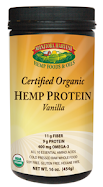
Wheatgrass was first discovered in the 1930'a by Charles Schnabel, a food scientist who made the attempt to bring back dying chickens to a healthy state. Charles discovered that chickens fed on mixtures that contained a high level of wheat grass, were healthier and had 150% better egg production than other hens. He went on to conduct research and experiments, which were later funded by Quaker Oats and American Dairies Inc. to determine the benefits of wheatgrass for human consumption.
In the 1960s, a women named,
Ann Wigmore re-discovered the benefits of wheat grass and healed herself of colon cancer. Not long after, Ann Wigmore along with other scientist developed a diet which is now taught and offered at the
Hippocrates Health Institute, based on the philosophy, “ let food be thy medicine” to heal critical illness and diseases. The diet/program is reported to be very effective in treating many illnesses such as cancer and is based on the consumption of wheatgrass juice and a raw food diet enriched with over 13 vitamins. Many people who have visited the Institute, founded by Ann Wigmore, and have participated in the program have shared miraculous stories of being cured of many forms of illnesses, including cancer.
Click here to view testimonials.
So what exactly is wheatgrass? Wheatgrass is a wheat plant and acts as a blood purifier, cleanser, and detoxifier. It contains the powerful green pigment called chlorophyll. Chlorophyll plays a vital role in transporting oxygen to every cell in the body. With oxygen in the body's cells, cancer cells cannot manifest and the body can function at the optimal level fighting off disease, harmful bacteria, and cancer. Did you know that chlorophyll has the same molecular makeup of blood? The only difference is that of the metallic atom element. Human blood or hemoglobin consists of iron, while in Chlorophyll the metallic atom is magnesium. Why is this important? because when chlorophyll is consumed, the blood absorbs it quickly allowing new red blood cells form and cleansing the body.
Wheatgrass comes in the form of a juice and contains 70% chlorophyll. It also comes in a powder or tablet form. You cannot eat or cook wheatgrass due to the body's inability to breakdown the plant in its raw form. You will also be happy to know that wheatgrass is different from the grain and refined grain products that people often develop allergies to. It does not contain gluten found in grain, which is the main critical component of wheat resulting in allergic reactions.Therefore, if you're allergic to wheat, wheatgrass is an exception to anyone suffering from wheat allergies.
Now for the miraculous benefits of wheatgrass, which can also be found in more detail on the Hippocrates Health Institute website by
clicking here.
-Increases red blood-cell count and lowers blood pressure.
-Cleanses the blood, organs and gastrointestinal tract of debris
-Aids in reducing blood pressure by dilating the blood pathways throughout the body.
-Stimulates the thyroid gland, correcting obesity, indigestion
-Restores alkalinity to the blood.
-Used to relieve many internal pains, and has been used successfully to treat peptic ulcers, ulcerative colitis, constipation, diarrhea, and other complaints of the gastrointestinal tract.
-Powerful detoxifier, and liver and blood protector.
-Fights tumors and neutralizes toxins.
-Externally applied to the skin can help eliminate itching almost immediately.
-Soothes sunburned skin and aids in healing cuts, burns, scrapes, rashes, poison ivy, athlete's foot, insect bites, boils, sores, open ulcers, tumors.
-Neutralizes toxic substances like cadmium, nicotine, strontium, mercury, and polyvinyl chloride.
-Greatly increases energy levels when consumed daily.
-Cleanses the blood and helps rejuvenate aging cells and slows the aging process down. It helps to tighten loose and sagging skin.
Now that you know a bit about wheatgrass, you can now begin to incorporate it into your diet or as a healing remedy. Never underestimate the power and the ability of the natural wonders of the world that god provided to combat illness and disease.





.jpg)


